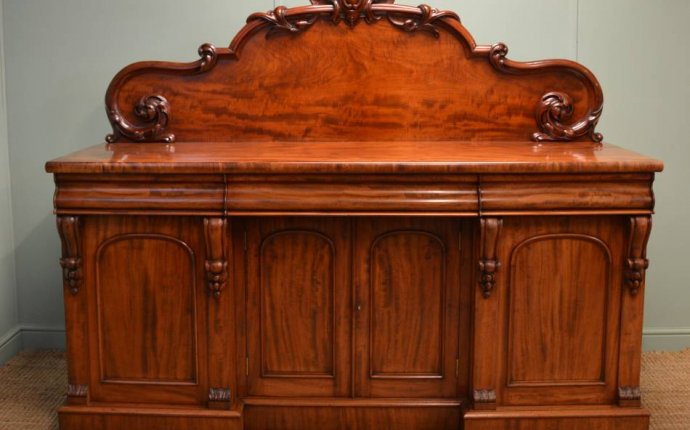
German Antique Furniture Styles
The substitution of bold-scale moldings, surfaces and shapes for excessive applied plastic ornament differentiates the Early Baroque of Holland from the Late Renaissance styles of Germany. Frankfort cupboards were richly curved, lush in outline and modeling as a whole. To the north, Hamburg walnut cupboards were severely, vigorously architectural with heavy cornices and high raised panels. Pointed ovals, base with drawers and large bun feet, with richly carved enclosed leaf, flower, and fruit ornaments characterize these excellent ornate structures.
Spiral turned legs are universal in earlier Baroque tables and chairs, but about 1690 the cabriole leg was widely accepted. The Augsburg cabinetmakers used both ebony and Boulle tortoiseshell. Bombe commodes and high chairbacks with smooth wooden splats are common.
Rococo
The Rococo style of Louis XV permeated German cabinetmaking through the period 1730-1790. Consoles, mirror frames, commodes, chairs deluxe and canapés were embellished with birds, fruit, and flowers, garden tools and musical instruments, carved, glided and painted in the French manner. The German Rococo on its own initiative indulged in more unrestrained fantasy than its prototype.
German Classicism
German cabinetmakers made writing tables and commodes, chairs and cupboards in the familiar proportions and some of the austerity of the Parisian manner. The classic straight lines were more floridly ornamented. David Roentgen’s semi-industrial workshop, the first of its kind, manufactured luxury furniture between 1772 and 1795, and was a unique phenomenon in Germany. He was one of the first to sell furniture to the most powerful sovereigns in Europe and later to many other important people; prior to Roentgen, Germany exported neither her furniture nor her style. His large cylinder desks, commodes, writing tables, etc., used light mahogany, superb marquetry and ormolu mounts. Painted furniture was also popular.
Biedermeir
After 1830, the style settled down recognizably to express easy comfort on a lightly classical foundation. Light native woods, light birch, cherry, pear, apple, maple and ash were displayed to advantage, without other ornament, in commodes and chests, tables, large secretary-desks and cabinets. Curved chairs and sofas were upholstered with horsehair, calico, and rep, and bore infinite variety of graceful ornament based on swans and griffins, cornucopias and domestic flowers and fruits. This style is so dominantly middle class, so comfortably gauche that it took its name from the comic-paper character Papa Biedermeier, who expressed his simple political views in Fliegende Blatter.
The growing comfort and wealth of the mid-century period undermined this simplicity and brought various neo-Rococo and merely lavish picturesque effects. The weakening of the genuine feeling for style is evidenced by the acceleration of the changes in style, where everything seemed to come and go with individual whims.
German Folk Styles
As elsewhere in Europe, the fashionable styles in northern lands reflected only the tastes and symbols of the aristocratic class, although some of these styles filtered down through the classes and accommodated themselves to indigenous skills and tastes. Woodcarving is a local art where wood is abundant and appreciated, such as the Alps and the Black Forest. German craftsmen produced unique furniture in provincial regions from the earlier times through the Industrial Revolution. After World War I, the movement toward functional form found its prophets in Germany, where the Bauhaus examined the reasons for design under the directions of Walter Gropius and Mies van der Rohe. Other powerful personalities, like Peter Behrens and Eric Mendelsohn, moved dynamically toward other objectives.









